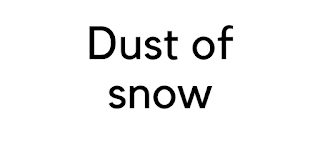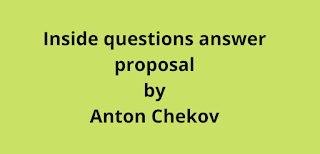Dust Of Snow class 10 CBSE questions and answers
SUMMERY
The poet claims that he once sat under a hemlock tree in a sorrowful, depressed state. On the poet, a crow sitting in the same tree shook off the snow dust, or tiny particles of frost that persist on the surface after a snowfall. The poet's mood was changed by this single act. He came to the realization he had only just misused a portion of his day making amends and mourning. However, the shift in his mood convinced him that he should spend the rest of the day doing something productive. The light dusting of snow dust swept away his sorrow. His spirits were renewed, and he prepared to make the most of the rest of the day. The light snow dust shower washes away his anxiety and despair. His soul is full of joy, and he prepares to spend the rest of the day in a positive and constructive way.
Appreciation
It's ironic that hemlock, which is poisonous when mixed with crow, a symbol of doom and fear, is used in the poem as the carrier of happiness during the narrator's lifetime.
The poem tells us that even modest acts of kindness can brighten our spirits and inspire us to do better.
.Question and Answer
What exactly is a "dust of snow"? What, according to the poet, has changed his mood? What has changed in the poet's mood?
. The term "dust of snow" refers to the minuscule snow particles. Because the particles are so small, poets refer to them as "dust."
When snowflakes fell on him, the poet was in a terrible mood. This instantly changed the poet's mood, and his day improved dramatically.
Q. What exactly is a hemlock tree? Why isn't the poet writing about a more 'beautiful' tree like a maple, oak, or pine?
A hemlock tree is a poisonous plant with small white flowers that blooms in the spring. Robert Frost did not use an oak, maple, or pine tree in his poem. Instead, he chose the hemlock tree over all the other beautiful trees on the planet. In reality, he did so to express his feelings and mood.
Q. Do the crow and the hemlock symbolize joy or sorrow? What is the significance of the snow dust that a crow sweeps off a hemlock tree?
The crow and hemlock tree represent the poet's sadness and depression in this materialistic world.
Snow dust is a symbol of natural delight and vitality. The crow shaking snow off a hemlock tree represents the poet passing through sad and dreary moments and into a time of joy and optimism.
q.: "I had rued that I had spared some part of a day." Explain.
The poet was depressed and hopeless at the time. As a result, he wasn't in a good mood. He was standing beneath a hemlock tree when a crow shook snow dust onto him. His mood was changed by this small and insignificant incident. He realized he was squandering his time and resolved to enjoy the remainder of the day.
Q.How did the poet react when a dusting of snow fell on him?
Answer: Peoople used to believe that both crow and hemlock plants were lucky. When the snow from the hemlock tree fell on the poet, however, he took it in a different direction. He was sad and depressed, but when the crow shook the hemlock tree and snow fell on him, he felt relieved and unburdened.
Q. Do you believe a crow is frequently referenced in poetry? When you think of a crow, what pictures spring to mind?
While we see birds like nightingales and sparrows in other nature poems, Frost uses a crow in this one. A crow is often associated with darkness, blackness, and gloom. As a result, other poets frequently include singing nightingales or lovely white doves in their works.
Notes to follow
1. It is a wintry day. I
2. There were piles of snowfall on the trees.
3. The poet was strolling beneath one of these snow-covered trees.
4. The plant was a hemlock, a coniferous with a reputation for being toxic.
5. Then, a crow landed on the hemlock branch.
6. As a result of the crow's quick movement, a large number of snow began to fall from the tree.
7. The poet, who was sitting beneath the tree, was pelted by snowfall.
8. The pile of snow was so light and airy that it resembled white snow dust.
9. The quick movement and entrance of the crow, as well as the dropping of the snowflakes, appear to be normal events. h
The Dropping of Fine Snows on the Poet, on the other hand, has a significant impact on him.
11. Previously, the poet had been depressed or despondent.
12. However, this simple, lovely act of nature provides him with a great deal of consolation.
13. The snow that falls on him alters his attitude and mental condition.
14. It brings joy to his heart.
15. That specific day had not been going good for him prior to this incident.
16. He'd made it a point that the day would be wasted.
17. However, when snowflakes fall on him, he realizes that the entire day has not been wasted .
18. Or in the very least, he'll be able to fully enjoy the snow for the rest of the day.
19. At the very least, some of the day has been enjoyable.
20. He would have lamented the waste about
Q. What are the poetic devices in dust of snow? if he had not had such a good experience.
Rhyme, Alliteration, Assonance, and Internal Rhyme are all used in Dust of Snow as poetic/literary devices. The entire rhyme finishes are simple: crow/snow.... mood/rued....and they all tie up nicely. Internal rhyming and other methods help to give specific sounds texture and resonance, as well as linkages.




Comments
Post a Comment